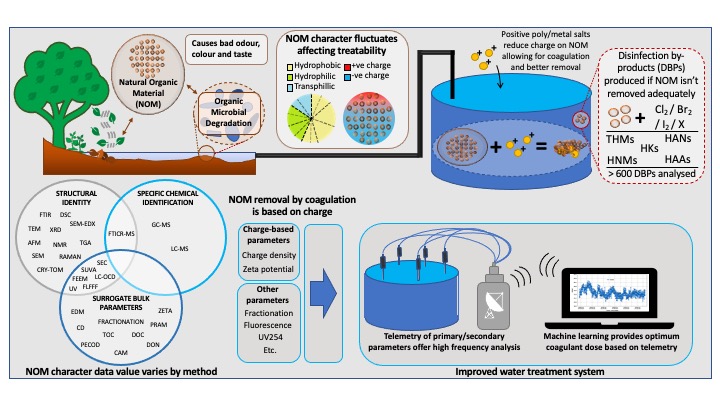Meet Daniel Ruth
Email: Daniel.ruth@cranfield.ac.uk
Academic and Industrial affiliations: Cranfield University and Scottish Water
Title of research project: Rapid process optimisation procedures and process selection methods for natural organic matter removal from drinking water.

Natural organic material (NOM) is commonly found in water sources and leads to increased colour and turbidity and can cause taste and odour issues in drinking water. The presence of NOM in water during disinfection can also lead to the formation of disinfection by-products (DBPs), some of which have been linked to negative human health impacts. It is therefore vital to reduce the amount of NOM present in the drinking water to reduce these effects. The bulk of NOM is generally removed in the coagulation stage where a positively charged coagulant is added to the water which neutralises the negatively charged NOM. This allows for the NOM to flocculate together and be removed more easily. Currently, the methods we use to monitor water quality are unable to effectively account for the rapid changes in NOM that can occur. This can lead to process deterioration. More advanced characterisation tools can have long lag times between analysis and coagulant dosing and the results from the analysis can have varying recovery rates.
The aim of this project is to determine the optimal parameters to measure to allow for more informed coagulation treatment. The coagulation process is directly related to the charge of the organic matter. Therefore, measurements such as charge density and zeta potential may provide the information needed for this process. These analysis tools will then be integrated into control systems at a live drinking water treatment works (WTWs) to allow for real-time monitoring and control as the water character changes. It is the ambition to use this data to develop artificial intelligence algorithms that will correlate the data with coagulant information and final water quality to determine the optimum coagulant dose. This will improve the resilience of the water treatment process, ensuring it is reactive to any changes in the water occurring in the future.

